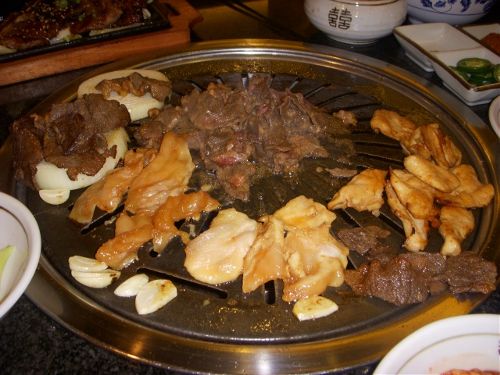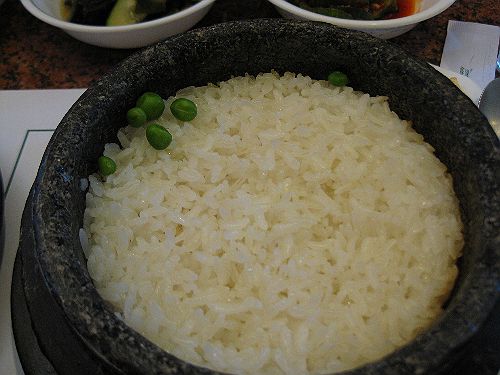
Numerous Buddhist Acts emerged after the mid-11th century, including the Nyingma, Gatang, Sagya, Gagyu, Zhigyed, Gyoyul, Gyonang, Kodrag and Xalhu sects. The latter five were rather weak owing to the lack of political support. They were thus forced to join force or were otherwise annexed by other sects, and as individual entities fell into the oblivion of the long flow of history. The following five sects enjoyed impressive popularity:
Nyingma Sect. The sect, founded in the 11th century, is also known as the Red Sect and is the oldest sect of Tibetan Buddhism. The sect paid great attention to absorbing the fine points of the Bon religion and, at the same time, did its best to locate Buddhist sutras secreted away when Darma moved to suppress Buddhism. Based on its practice of Buddhism deeply rooted in the Tubo Kingdom of the 8th century, the sect called itself Nyingma, a word meaning ancient and old in the Tibetan language. Monks of the Nyingma Sect wore red hats, hence the name the Red Sect. The Red Sect mainly advocates the study of Tantrism. Its theory was strongly influenced by Han Chine language Buddhism, and is quite similar with the theory of Ch'an School of Buddhism in China's hinterland. Today, the Red Sect is not only active in Tibetaninhabited areas in Ghina, but also in India, Bhuttan, Nepal, Belgium, Greece and France, as well as in the Unite States.
Gatang Sect. The Gatang Sect, founded in 1056, primarily advocated the study of Exoteric teachings, with later emphasis on Tantrism. In the Tibetan language, Ga refers to the teachings of Buddha, with tang meaning instruction. The combination Gatang thus refers to advising people to accept Buddhism based on the teachings of Buddha. Its doctrines were promoted far and wide and thus exerted great influence on various Tibetan Buddhist sects. However, along with the rise of the Gelug Sect in the 15th century, the Gatang Sect dissolved with its monks and monasteries merging with the former.
Sagya Sect. Sagya means “white land” in the Tibetan language. The Sagya Sect, founded in 1703, derived its name from the fact that the Sagya Monastery, the sect's most important monastery, is grayish white in color. Enclosures in the sect's monasteries are painted with red, white and black stripes, which respectively symbolize the Wisdom Buddha, the Goddess of Mercy and the Diamond Hand Buddha. Hence, the sect is also known as the Stripe Sect. The ever increasing influence of the sect and the expansion of feudal forces throughout its formation led to the increasing fame of the “five Sagya Sect Forefathers”. The Fourth Forefather Sapan Gonggar Gyaincain was summoned to Liangzhou in 1247 by the Yuan Dynasty (1271-1368) ruler to dialup matters concerning Tibet pledging allegiance to the Yuan Dynasty. This was followed by Sapan bringing various feudal forces in Tibet under control of the Mongols. Following the death of Sapan, Pagan, the Fifth Forefather of the Sagya Sect, emerged as a high-ranking official in the Yuan court. Pagba Was granted honorary titles such as “State Tutor”, “Imperial Tutor” and “Great Treasure Prince of Dharma”. Thereafter, the Sagya Sect emerged as the Yuan Dynasty representative in Tibet. During the Ming Dynasty (1368-1644) , Gonggar Zhaxi, an eminent monk with the Sagya Sect, journeyed to Nanjing, capital of the Ming Dynasty, to pay homage to Emperor Yongle. Gongar was granted an honorary title as the “Mahayana Prince of Dharma”, one of the three Princes of Dharma.
Gagyu Sect. The Gagyu Sect, founded in the 11th century, stresses the study of Tantrism and advocates that Tantrist tenets be passed down orally from one generation to another. Hence the name Gagyu, which in the Tibetan language means “passing down orally”. Marba and Milha Riba, the founders of the Gagyu Sect, wore white monk robes when practicing Buddhism , leading to the name White Sect. In the early years, the White Sect was divided into the Xangba Gagyu which declined in the 14th and to 15th centuries, and the Tabo Gagyu. The Tabo Gagyu was powerful and its branch sects were either in power in their respective localities or otherwise dominant amongst feudal forces.
Gelug Sect. The Gelug Sect, founded in 1409, was the most famous Buddhist sect in Tibetan history dating to the 15th century. The sect was founded during the reform of Tibetan Buddhism initiated by Zongkapa. Zongkapa himself was born at a time when the Pagmo Zhuba replaced the Sagya Regime in power. At that time, upper-class monks involved in political and economic power struggle led a decadent life, and rapidly lost popularity with society. Faced with this situation, Zongkapa called for efforts to follow Buddhist tenets. He proceeded to undertake lecture tours in many areas and wrote books accusing decadent monks of failing to abide by Buddhist tenets. Zongkapa spared no effort to press ahead with Buddhist reform. For example, in the first month of 1409 according to Tibetan calendar, Zongkapa initiated the Grand Summons Ceremony in Lhasa's Jokhang Monastery. The ceremony remains in practice even today. This effort was closely followed by the construction of the famous Gandain Monastery and the founding of the Gelug Sect which was famous for its strict adherence to commandments. The Tibetan language meaning of Gelug is “commandments”. Zongkapa and his followers wore yellow hats, and thus the Gelug Sect is also known as the Yellow Sect. Since its founding, the Yellow Sect has built the Zhaibung, Sera, Tashilhungpo, Tar and Labrang monasteries, which join the Gandain Monastery as the six major monasteries of the Gelug Sect. The Yellow Sect is also known for formation of the two largest Living Buddha reincarnation systems——the Dalai and Bainqen systems.








 PREVIOUS
PREVIOUS
